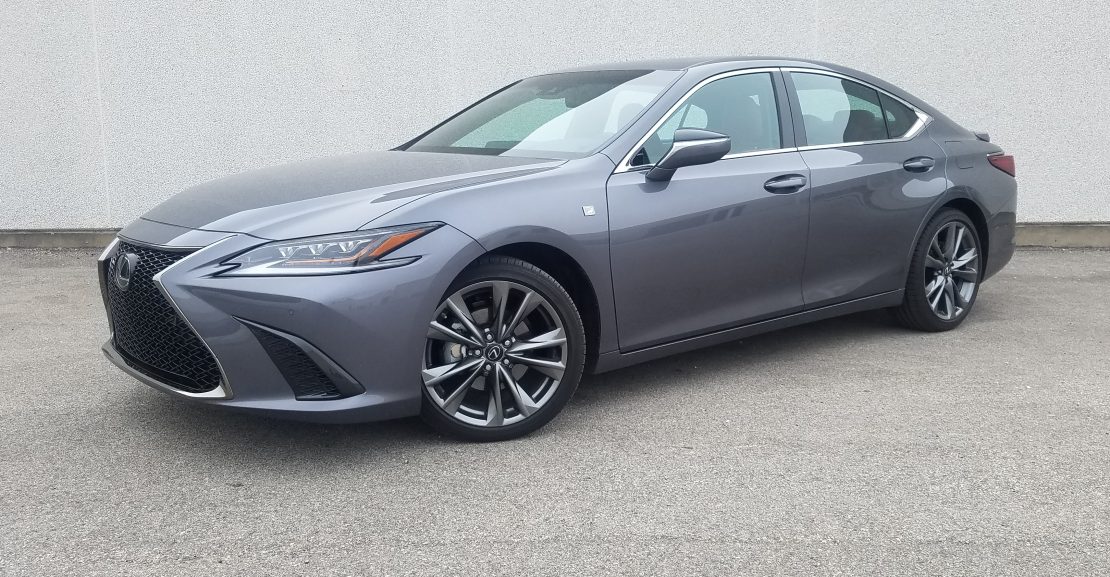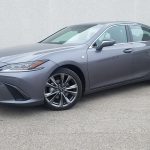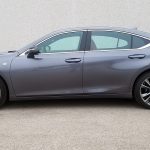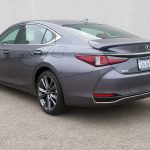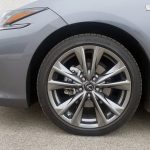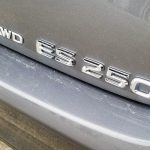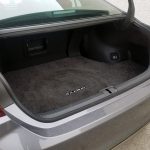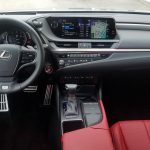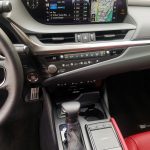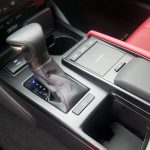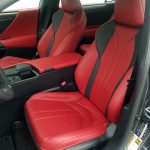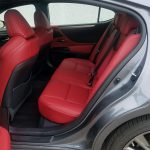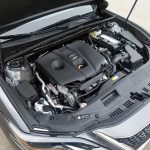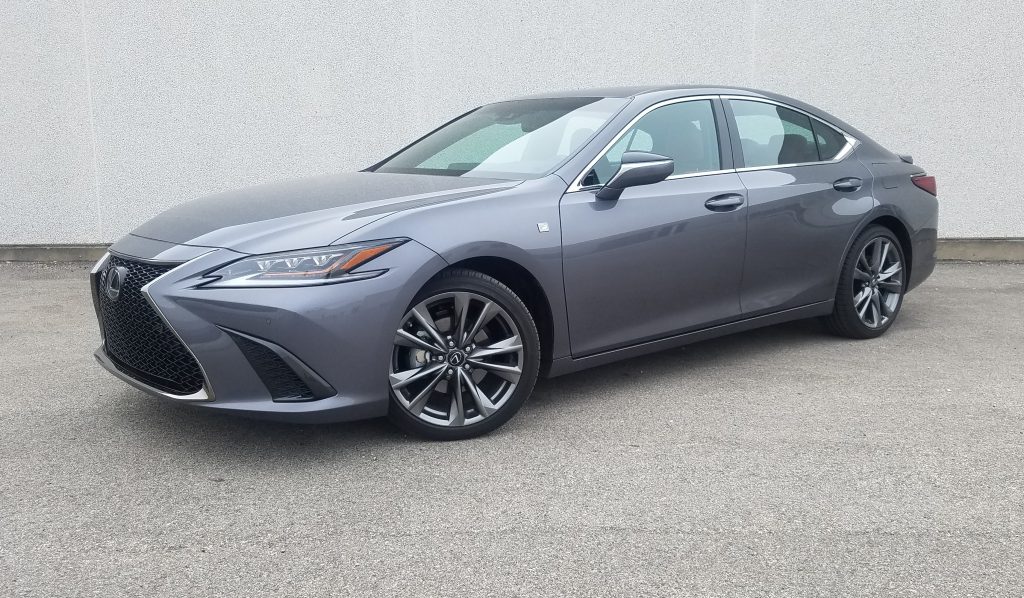
 2021 Lexus ES 250 AWD F Sport
2021 Lexus ES 250 AWD F Sport
Class: Premium Midsize Car
Miles driven: 363
Fuel used: 14.4 gallons
Real-world fuel economy: 25.2 mpg
Driving mix: 65% city, 35% highway
| CG Report Card | |
|---|---|
| Room and Comfort | A- |
| Power and Performance | B- |
| Fit and Finish | A- |
| Fuel Economy | B- |
| Value | A- |
| Report-card grades are derived from a consensus of test-driver evaluations. All grades are versus other vehicles in the same class. Value grade is for specific trim level evaluated, and may not reflect Consumer Guide's impressions of the entire model lineup. | |
| Big & Tall Comfort | |
| Big Guy | A |
| Tall Guy | B |
| Big & Tall comfort ratings are for front seats only. "Big" rating based on male tester weighing approximately 350 pounds, "Tall" rating based on 6'6"-tall male tester. | |
| Drivetrain | |
| Engine Specs | 203-hp 2.5L |
| Engine Type | 4-cylinder |
| Transmission | 8-speed automatic |
| Drive Wheels | All-wheel drive |
EPA-estimated fuel economy: 25/34/28 (city/highway/combined)
Fuel type: Regular gas
Base price: $45,700 (not including $1025 destination charge)
Options on test vehicle: Wireless cellphone charger ($75), 10.2-inch head-up display ($500), Triple Beam LED headlamps ($1515), power rear sunshade ($210), Navigation/Mark Levinson Audio Package ($2900), hands-free power open/close trunk ($550), F Sport heated leather-trimmed steering wheel w/ windshield wiper de-icer and fast-response heater ($180), door edge guards ($145), rear bumper applique ($80), illuminated door sills ($400), carpet trunk mat ($120)
Price as tested: $53,400
Quick Hits
The great: Pleasant, absorbent ride with decent handling composure; build quality; upscale cabin trimmings
The good: All-weather versatility of all-wheel drive; F Sport model delivers a more engaging driving experience with little compromise in all-around comfort
The not so good: Fidgety Remote Touch infotainment control interface; rear seat backs don’t fold; all-wheel drive can’t be had with V6 engine
More ES price and availability information
John Biel
It seems that as far as Lexus is concerned, two driving wheels equals two engine cylinders. The 2021 model year sees the debut of a quartet of 4-cylinder all-wheel-drive ES 250 premium-midsize sedans with starting prices that exactly match those of V6 front-drive models in the same trim levels.
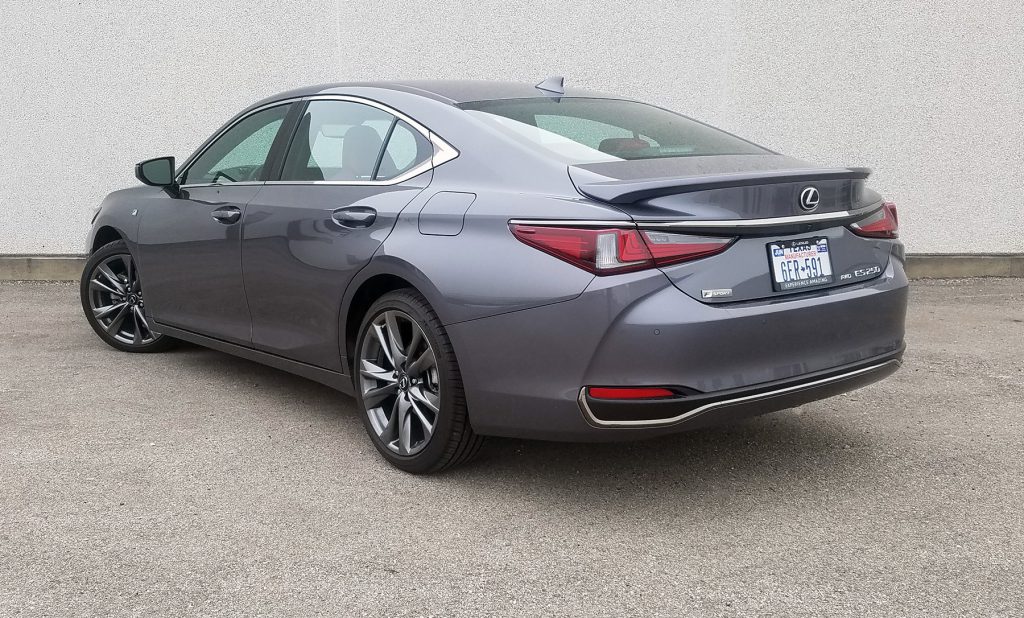
With base, Luxury, Ultra Luxury, and F Sport variants the ES 250 has mostly the same lineup as its ES 350 siblings, save for the latter’s new F Sport Black Line Special Edition (limited to 1500 units). Consumer Guide got its first taste of the ES 250 as an F Sport that begins at $46,725 with delivery. However, the test car came to $53,400 after adding a laundry list of options and accessories that spanned from a $75 wireless charger to a $2900 audio-upgrade package with a Mark Levinson 17-speaker sound system, navigation, and 12.3-inch display screen.
Engine and driveline aside, all F Sports are equipped alike. Special features include a distinctly tuned suspension, 19-inch split-5-spoke alloy wheels, specific exterior styling touches including a blacked-out crosshatch grille surface, color-keyed rear spoiler, rain-sensing windshield wipers, heated and ventilated 10-way-power-adjusted F Sport memory seats, Hadori aluminum interior trim, instrument array that changes with driving mode, and blind-spot monitor/rear cross-traffic alert with parking assist featuring automatic braking.
Test Drive: 2021 Genesis G80 3.5T Prestige
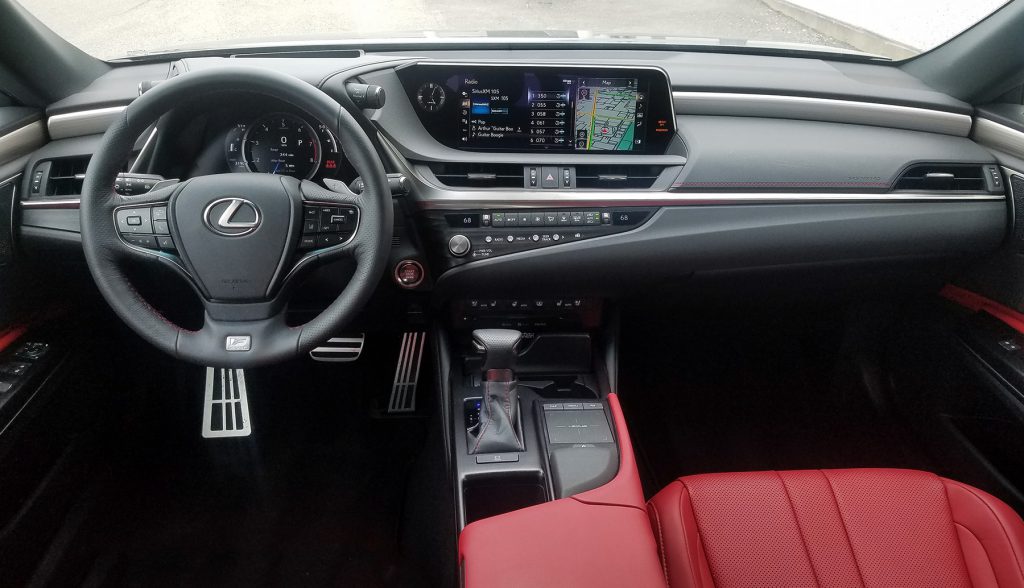
All that is in addition to a power moonroof, carpeted floor mats, dual-zone automatic climate control, satellite radio, Wi-Fi hotspot, Apple CarPlay/Android Auto compatibility, and Lexus Enform remote connectivity including Google Assistant or Amazon Alexa. Driving assistance is bundled within the Lexus Safety System+ 2.0 with low-light-pedestrian and daytime-bicyclist detection, adaptive cruise control, automated emergency braking, lane-departure warning/assist, lane-tracing assist, road-sign information, and automatic high-beam headlights.
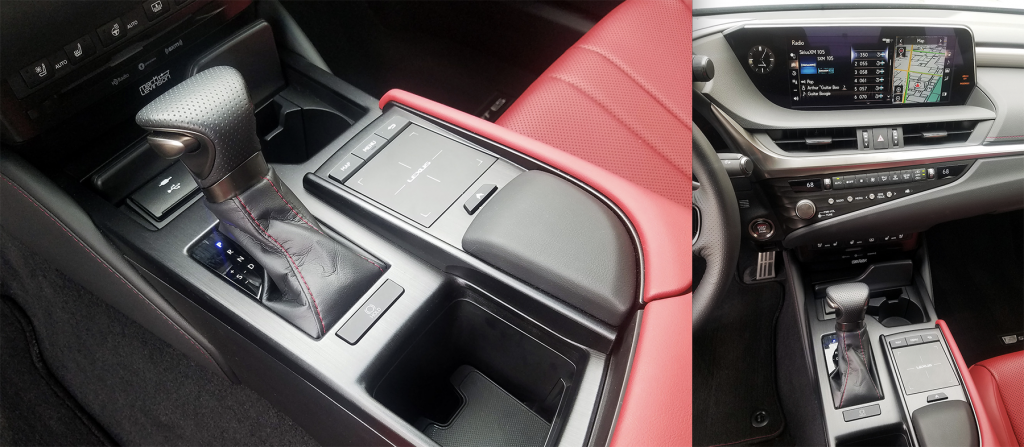
The ES 250 four is a naturally aspirated 2.5-liter job of 203 horsepower and 184 lb-ft of torque. That’s 99 ponies and 83 lb-ft short of what the V6 produces, so acceleration isn’t as lively as in a 350. (The manufacturer cites a 0-to-60-mph time of 8.6 seconds, a full two seconds slower than a 350—and 0.5 second slower than the ES 300h hybrid.) However, it is commendably smooth and quiet for a four, and it is well matched to the 8-speed automatic transmission that kicks down promptly when extra passing power is needed. All ESes have steering-wheel shifter paddles for elective gear changes.
You would think that what the 2.5 lacks in power it should recoup in fuel economy, but that wasn’t this driver’s experience. He logged just 20.3 mpg from a test stint of 77.2 miles that included 70 percent city-style operation. In a longer, highway-biased test of a 2019 V6 F Sport he topped 24 mpg. The four has EPA fuel-economy ratings of 25 mpg in the city, 34 on the highway, and 28 combined versus respective projections of 22/33/26 in the ES 350 F Sport.
Quick Spin: 2020 Lexus ES 300h Ultra Luxury
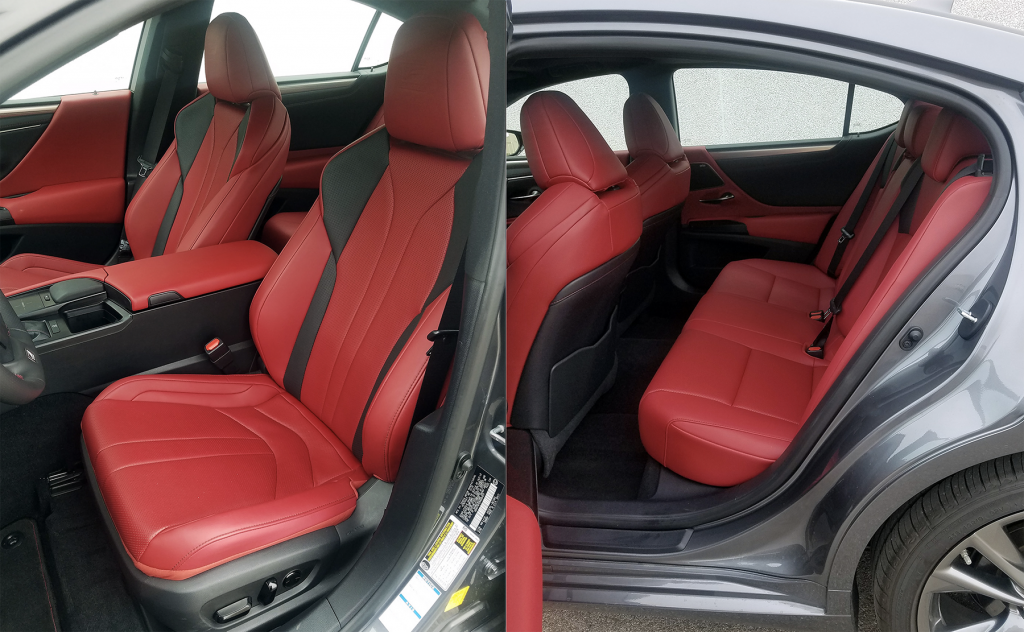
The new all-wheel-drive system reserved for the 250 automatically distributes torque from 100 percent in front under normal conditions to as much as 50/50 front and rear as conditions dictate. F Sport chassis calibrations aren’t drastic enough to harm ride quality—the model remains as laudably comfortable as any other ES—but selecting “Sport” driving mode induces subtle changes to ride firmness and steering resistance that make for improved car control. One slight difference between the 250 and 350 F Sports is that the former is not available with the optional adaptive variable suspension (and “Sport S+” and “Custom” drive modes) that can be added to the V6 car.
Test Drive: 2020 Cadillac CT5-V
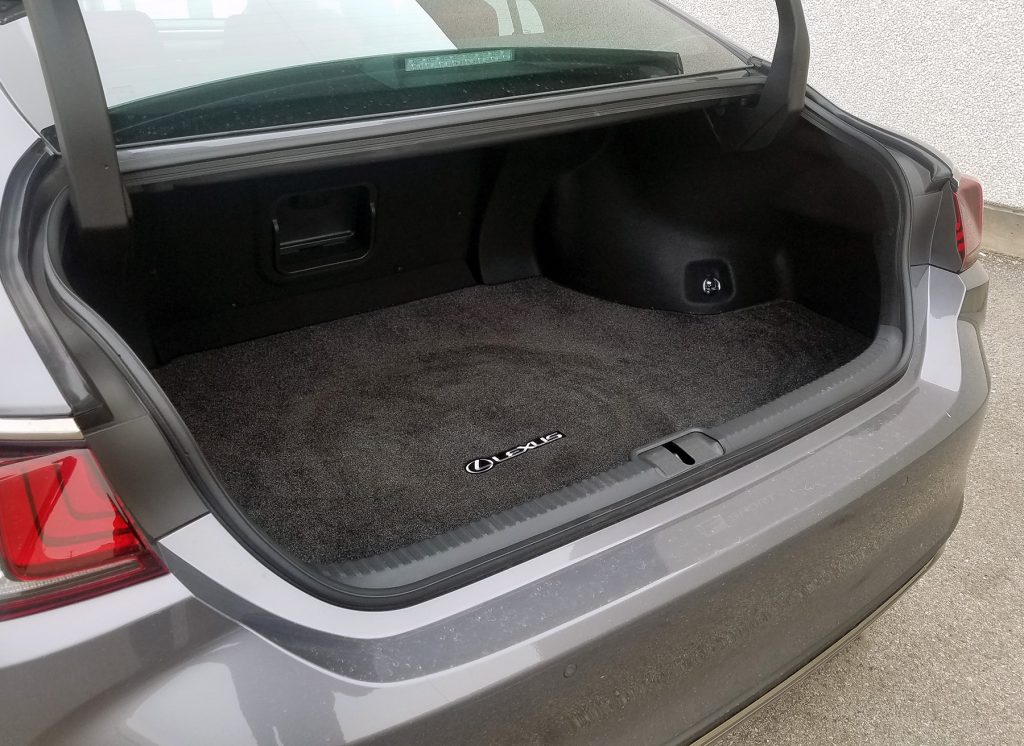
Having been redesigned for 2019, the fundamentals of the ES remain unchanged. Folks who occupy the well-bolstered front seats will enjoy good leg- and headroom, and rear-seat legroom is great for the class. Three adults could get across the rear seat, though the middle rider will have to straddle the floor tunnel. Relatively thin pillars reduce obstructions to driver vision all around.
The 16.7 cubic feet of trunk space is quite ample; among the true sedans in the premium-midsize class only the much-costlier Maserati Ghibli has more. However, contrary to common practice in midsized cars, the ES’s rear seat backs do not fold to expand cargo capacity. (There is a central pass-through to the rear seat.) The trunk floor is flat and full width toward the back but narrows a bit between the wheel houses. Gooseneck hinges extend into the trunk space but are covered in plastic to protect cargo.
Abundant soft-touch surfaces and brushed-metal trim adorn the dash and doors. Infotainment controls were redone for the redesign but we’re not rabid fans of the console-mounted touchpad. A lot of tapping is necessary to input settings—it can distract from driving—and doing it with precision while moving is no sure thing. The optional 12.3-inch display screen (an 8-inch screen is standard) is clear and informative. As for the climate system, flipper-type levers input temperature settings, with repetitive-press push buttons for fan speed and mode selections. These controls can be reached easily but seat heat/ventilation controls are parked a little out of the way at a point where the instrument panel passes over the console. Personal-item storage falls to pockets in all doors, a useful glove box, smaller console box, pullout bin to the left of the steering column, twin covered cup holders in the console, hard-sided pouches on the backs of the front seats, and cup holders in the pull-down rear armrest.
Test Drive: 2020 Toyota Avalon Limited
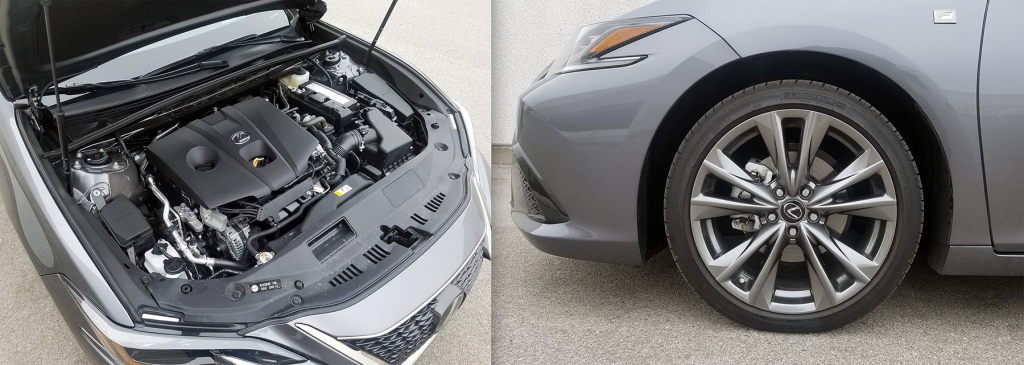
Considering that it’s a CG “Best Buy” selection, we certainly think highly of the Lexus ES lineup as a whole. Since you can get more power—at little fuel-mileage penalty—for the same money in an ES 350, it seems a better buy on paper than the 250. But if you live in an area where the weather makes all-wheel traction a good thing, the 4-cylinder car may be preferred, and you won’t pay a premium for it. Lexus has seen to it that everything evens out.
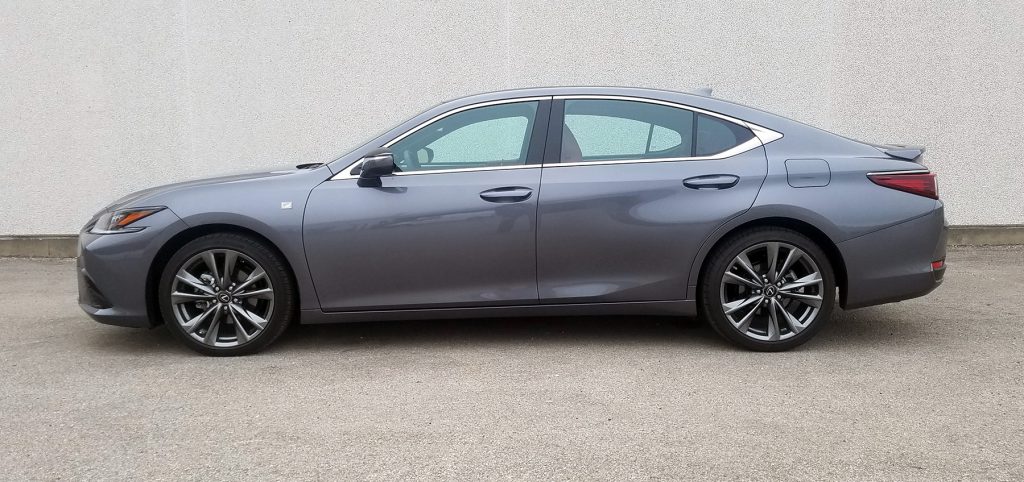
Check out the Consumer Guide Car Stuff Podcast

